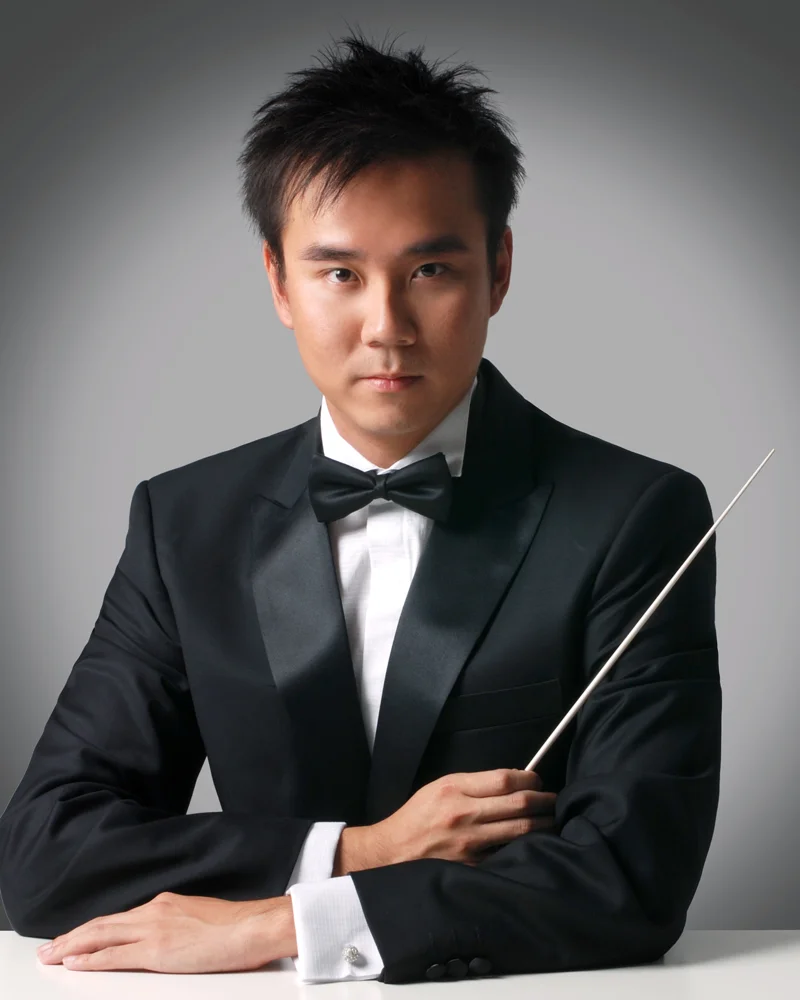Ng opens first New England Philharmonic season with a bracing blast

Tianhui Ng led his first program as music director of the New England Philharmonic Sunday at Jordan Hall.
Tianhui Ng’s tenure as the New England Philharmonic’s new music director kicked off in style Sunday afternoon at Jordan Hall. Granted, it was just one concert, but on the merits the new era looks a lot like the previous, Richard Pittman-led epoch—and that’s good news.
Among other things, Pittman, who stepped down following a debilitating stroke in 2020, was a brilliant, ambitious programmer. Time will tell how the rest of this Ng-planned season unfolds, but Sunday’s concert, “Remembered Futures,” proved wholly bracing.
Its biggest offering was John Corigliano’s Symphony No. 1. Written for the Chicago Symphony Orchestra in 1988, the score is informed by loss, particularly the deaths of many of the composer’s friends during the first decade of the AIDs epidemic.
Often furious and raw, the music wears its emotions on its sleeve. Sometimes this is problematic: the gestural quality of Corigliano’s materials can grow shrill and redundant, as occurs during the explosive, aleatoric zenith of the third-movement Chaconne.
Generally, though, the composer’s theatrical sensibilities serve him well. The echoes of Isaac Albeniz’s “Tango” that emerge in the outer movements are haunting and wistful. So are the instrumental eulogies to lives lost over the first half of the Chaconne. Ultimately, most of the score’s free, asynchronous elements (especially the discreet, quieter ones) are affecting.
Sunday’s reading was well-directed and potent. Ng shaped the big opening movement (“Of Rage and Remembrance”) with confidence, ensuring its bold strokes came across with strength and color. He did the same in the Tarantella, whose delirious metrical shifts and nightmarish tonal palate, astonishingly, held no terrors for the semi-professional NEP.
The orchestra’s 32 string players felt paltry at times next to 43 combined winds, brasses, and percussionists. While the imbalance resulted in some anemic exposed textures at the beginning of the Chaconne, the movement’s solos were generally eloquent. Meantime, the Epilogue’s benediction-like montage of previously-heard themes unfolded touchingly against the backdrop of muted brass “waves.” The long, final solo cello fadeout was perfectly judged.
If one might have occasionally wanted more spaciousness in the reading – “Of Rage and Remembrance’s” opening gesture wasn’t quite milked for all its worth and the finale felt a touch rushed – the interpretation’s overriding expressive impact rang true.
So did Iván Rodríguez’s A Metaphor for Power. Written in 2018, the piece is a response, in part, to the Puerto Rico-born composer’s experiences with racial discrimination. Taking its title from James Baldwin, the score proceeds, in Baldwin-esque fashion, to offer an eloquent, incisive critique of Western musical conventions, in the process deconstructing a couple of familiar, patriotic songs (“My Country ‘tis of Thee” and “The Star-Spangled Banner”).
Nothing veers too far afield: Rodríguez’s writing here is broadly lyrical and, harmonically, not overly acerbic; no extended techniques are to be found (though members of the orchestra do freely chant phrases – i.e. “let freedom ring” – at a couple of points). But he clearly has a strong feeling for musical drama, juxtaposing violent, tumultuous figures with episodes of spare, songful reflection and, at a couple of points, clearing out orchestral textures in a manner worthy of Mahler. Sunday’s performance was vigorous in those bold moments and warmly secure in the exposed ones.
Likewise rich-toned was the NEP’s account of Mary D. Watkins’ “Soul of Remembrance.” A hymn-like march with a quizzical ending taken from her 1994 pentalogy, Five Movements in Color, Sunday’s was its soulful Boston premiere.
NEP composer-in-residence Eric Nathan’s Opening, also being heard locally for the first time, generally eschewed easy points of reference, at least over its first two-thirds. Essentially a study in spatial sonorities, the score spreads soloists from the orchestra out into the hall to echo and, eventually, converse with one another. A fast coda unexpectedly wraps things up in a blaze of light.
What the tonal second section has to do with the chromatic first is anybody’s guess. On Sunday, the juxtaposition sounded a bit like a mash-up of Steven Stucky with Jerry Goldsmith—but who’s going to argue with a burst of brassy triads? On this occasion, at least, they underlined the afternoon’s fundamentally celebratory mood.
The NEP plays music by Texu Kim, Gabriela Ortiz, Debussy, Sibelius, and Copland at 3 p.m. December 4 at Tsai Performance Center. NEPhilharmonic.org
Posted in Performances




